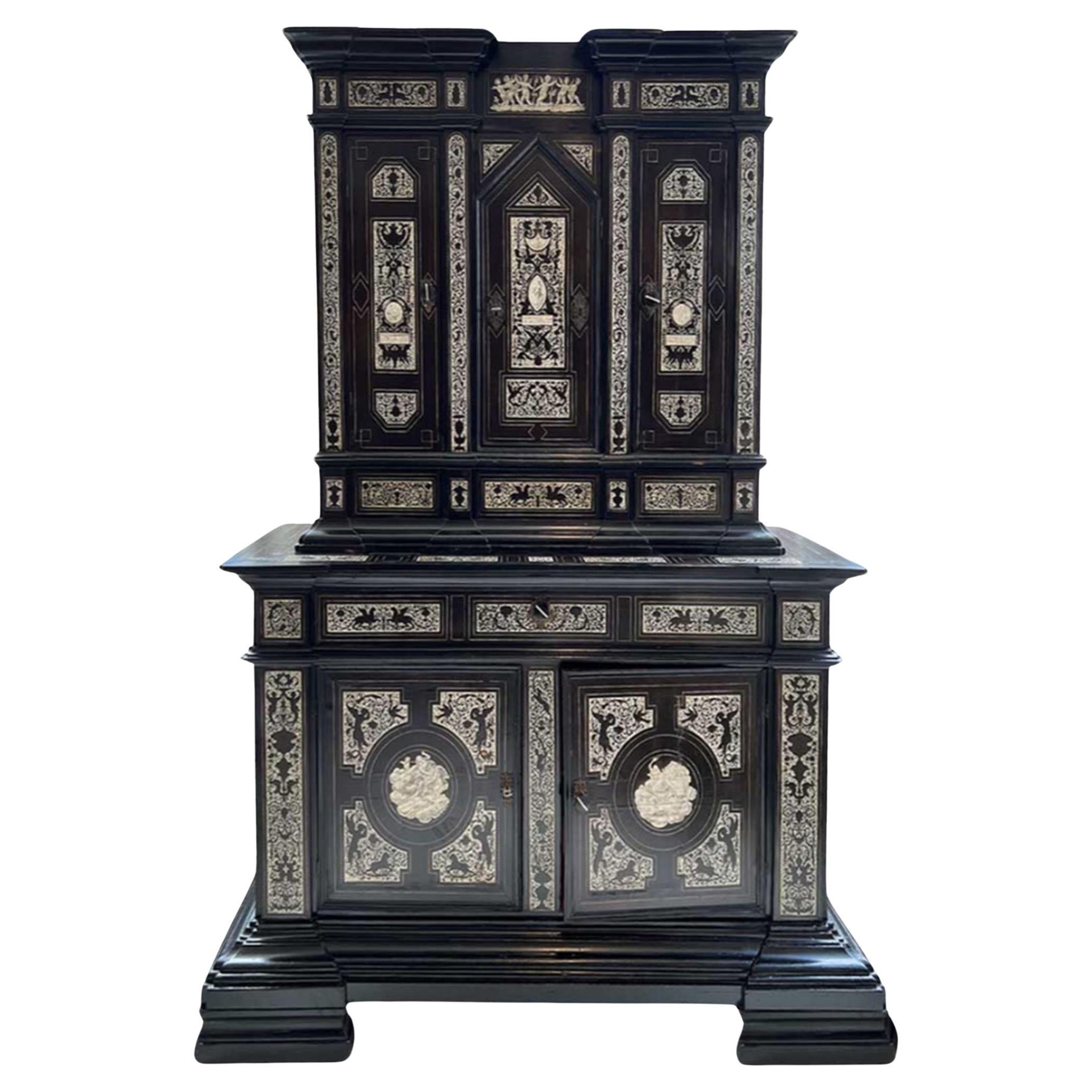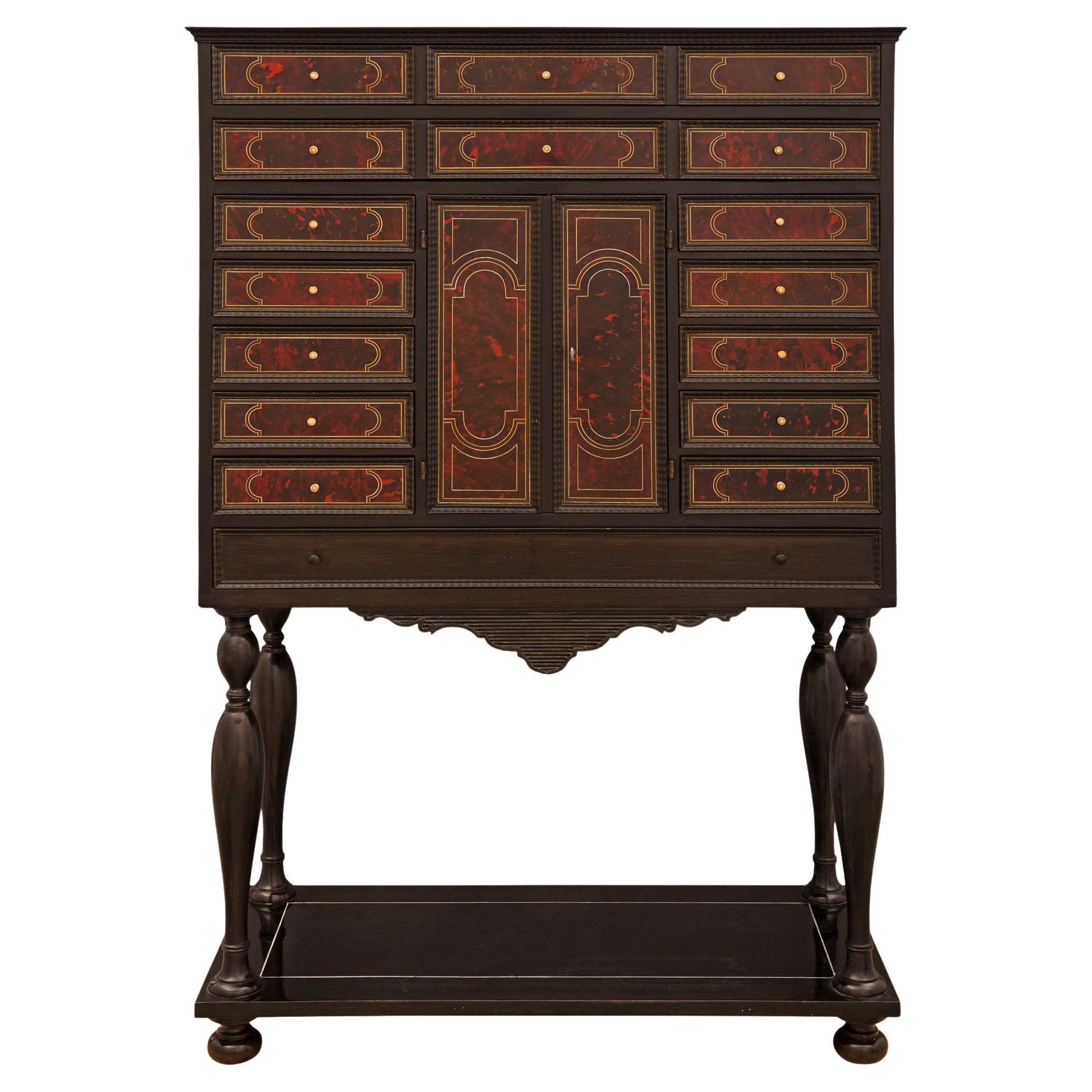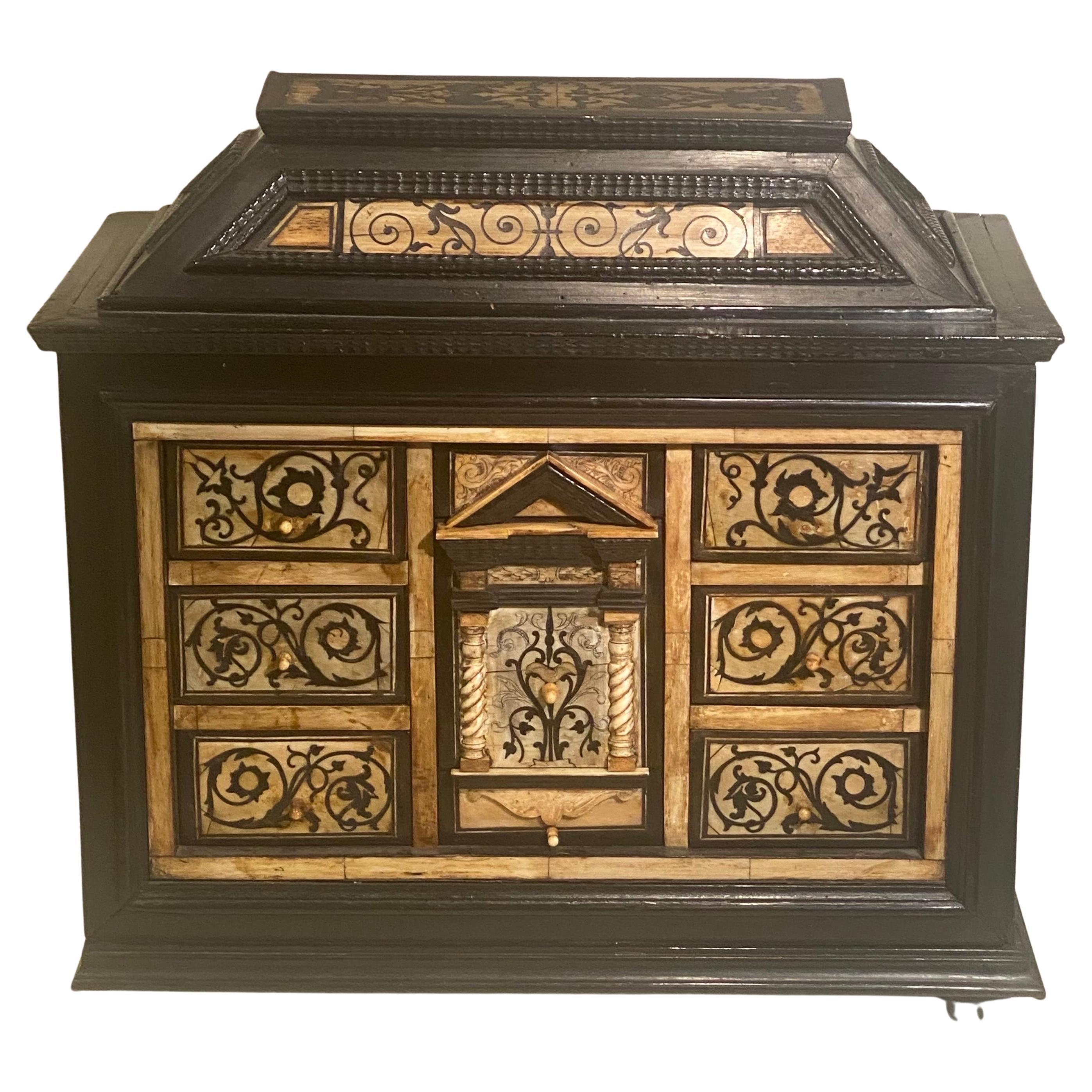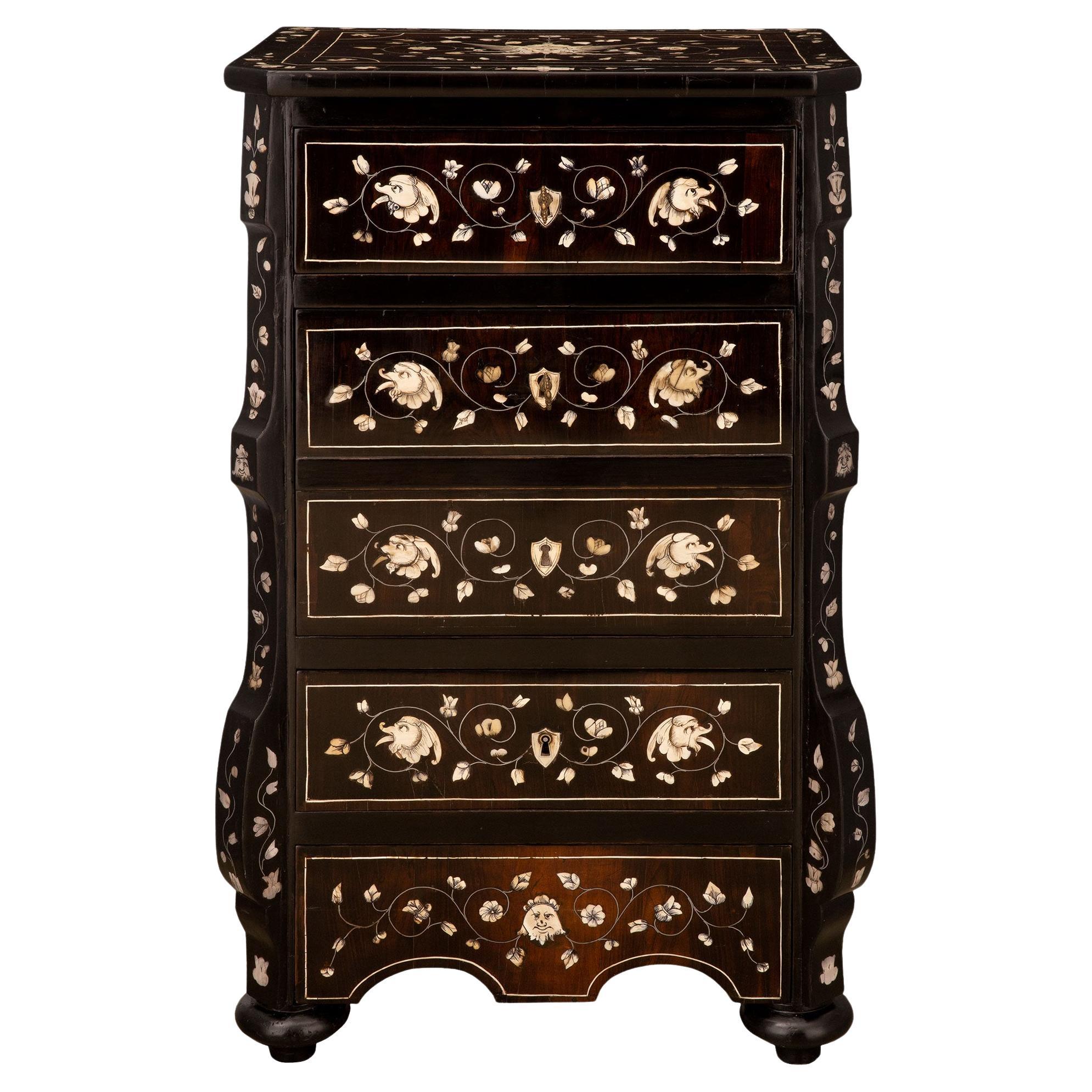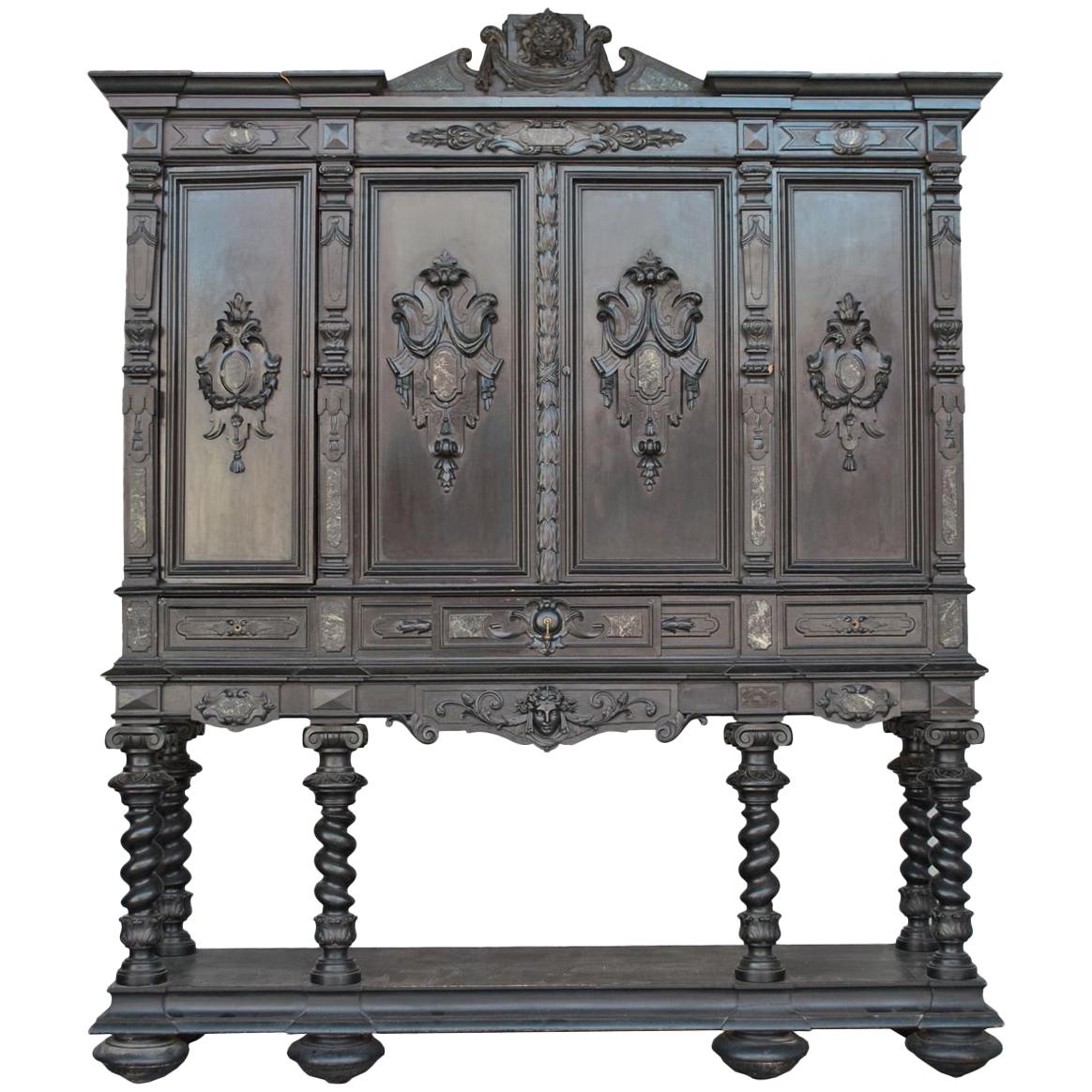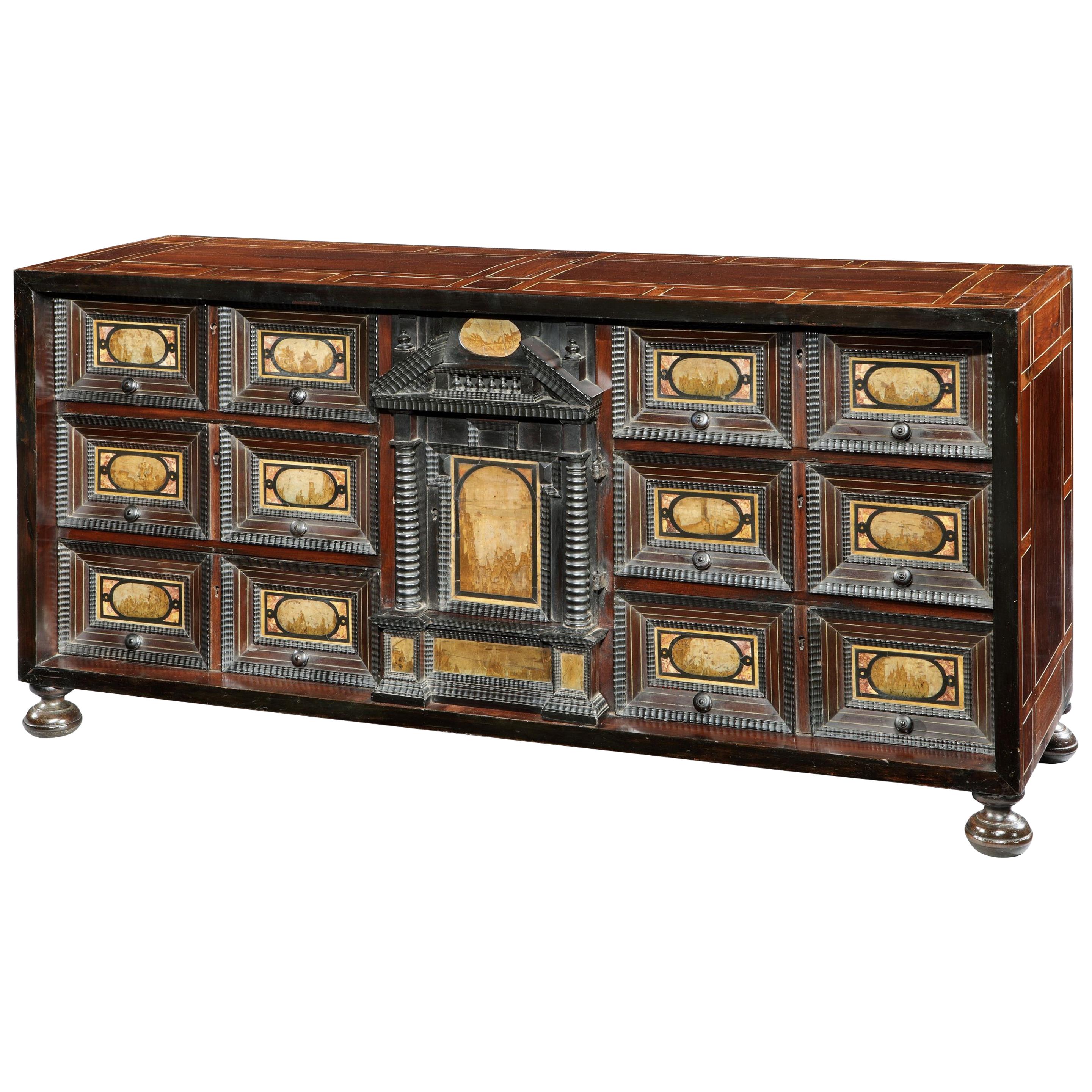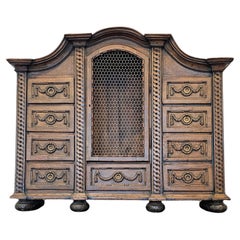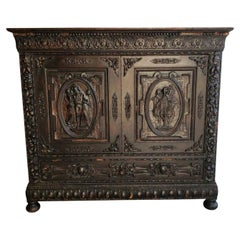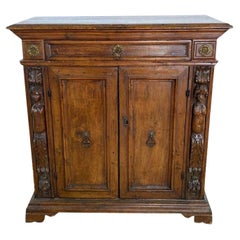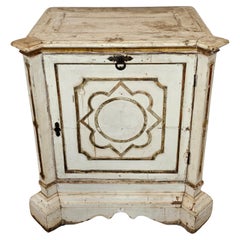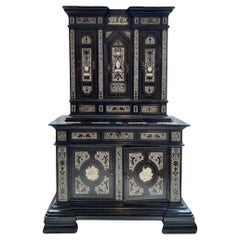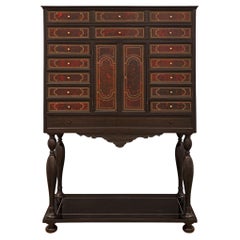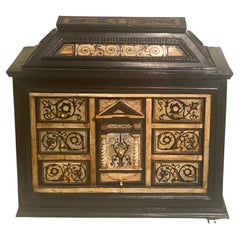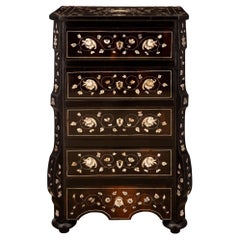Items Similar to 17th Century Italian Milano Renaissance Period Bone Ivory Ebony Tabletop Cabinet
Want more images or videos?
Request additional images or videos from the seller
1 of 21
17th Century Italian Milano Renaissance Period Bone Ivory Ebony Tabletop Cabinet
$9,500
£7,208.38
€8,242.14
CA$13,268.92
A$14,753.24
CHF 7,703.33
MX$179,582.83
NOK 98,291.10
SEK 92,094.06
DKK 61,512.60
Shipping
Retrieving quote...The 1stDibs Promise:
Authenticity Guarantee,
Money-Back Guarantee,
24-Hour Cancellation
About the Item
A scarce nearly 400 year old fine quality Italian Lombard ebony rosewood bone and ivory tabletop curiosity cabinet with warm rich beautifully aged patina and interesting provenance. circa 1650
Milan, Lombardy region of Northern Italy, dating to the early to mid 17th century.
Nothing evokes the Renaissance era better than these rare authentic small table cabinets with their refined decorations, extraordinary workmanship, and rare exotic luxurious materials. Precious objects, the cabinet itself has become a jewel, highly prized and shrouded in mystery, they illustrate the epitome of refinement, elegance, and sophistication, showcasing the very finest quality craftsmanship, skilled workmanship, and highly specialized artistic inlay work of the 17th century
Exceptionally executed handcrafted Milanese work, this most precious table cabinet stands out for having such detailed and elaborate engraving work, as well as the exhibition style open-chest rectangular box form, elaborately decorated, featuring visually striking contrasting hand carved and engraved natural bone and ivory filets, marquetry plaques and banding. The dovetailed walnut open-front rectangular case veneered in exotic ebony and rosewood precious woods, fitted with seven drawers including a lower row with three simulated drawer-fronts constituting a single drawer, surrounding a central door opening to reveal niche compartment topped with a pair of small drawers that thanks to an ingenious system allow access to a concealed secret drawer and hidden shelved compartment!
Extensively engraved inlays, stylized scrolling foliate rinceaux arabesque marquetry, blackened ebonized wood trim, affixed with the original ironwork and hardware, including steel ace of spade strap hinges and lock, intricate bronze pierced scrolled openwork spandel corner brackets, and ornate patinated brass lion mask drop-ring pulls, the case with visible dovetail joinery to the top, large framed diamond inlay to the flanks, unfinished verso, all raised on tall turned onion bun feet.
- PROVENANCE / ACQUISITION:
Property from the Collection of Frederick H. Schrader.
Who acquired it from:
Tom Stansbury Antiques, Newport Beach, California;
Acquired from the above owner through the highly reputable auction house Heritage Auctions, Dallas, Texas. 2025 April 17 Sophisticated Palate: Fine & Decorative Arts from the Collection of Frederick H. Schrader, Napa Valley Signature Auction catalog #8210, lot #61046
Fred Schrader is often described as one of the "bad boys" of Napa Valley, a title that reflects his adventurous spirit and unconventional approach to life. In addition to producing many of the world’s finest Cabernet Sauvignons – first with Colgin Cellars, then with Schrader Cellars – Fred Schrader has been an art dealer and collector since the 1970s, and he has traveled the world in pursuit of treasures.
- DIMENSIONS: (approx)
17.5" High, 21.125" Wide, 12" Deep;
(44.5 x 53.7 x 30.5 cm)
- HISTORY:
The cabinet was a furniture replacing the typical two bodies sculpted buffets of the 16th century. It became in the 17th century a pageantry furniture highly appreciated by the greatest sponsors of this period, such as Marie de Medici or the Cardinal Mazarin, that had a collection of more than 20 pieces.
Initially linked to the taste for medals and coins collections of the Renaissance period, the cabinet became itself a object that can be admired thanks to its panels decorated with paintings, precious woods marquetry, ivory, Boulle marquetry, pietra dura, scagliola, etc...
The history of these cabinets is complex and the manufacture was developed in many countries, notably Germany, Holland, Italy, England and France. With the creation of Oriental Indies Companies, occidental models were also built from various elements including lacquer panels and then exported in Europe.
The origin of this type of cabinet is believed to be Dutch. Some craftsmen from the Holy Roman Empire such as Theodore de Voghel and Iacobus Fiamengo were sent to the royal armory of Naples to make rifle and crossbow stocks for the service of the Spanish Habsburgs.
Given the success of this luxurious production, they decided to respond to a growing demand by producing pieces for civilians, in particular precious cabinets for wealthy merchants stopping over in the port.
To do this, they hired "intagliatore d'avoli" such as the engraver Giovanni Battista de Curtis, as well as ironworkers and goldsmiths to create the rich mounts for these travel cabinets.
Several pieces commissioned by the Court and documented are now preserved in Italian museums.
After the revolt of 1647 and the proclamation of the Neapolitan Republic, the production center followed the Spanish court and moved further north to the Duchy of Milan.
Until 1713, the kings of Spain remained Dukes of Milan and made the city one of the richest artistic centers in Europe, developing the arms trade, textiles and especially the banking sector.
In addition to the minting of gold coins, Lombardy became the European capital of finance.
Later, similarly styled cabinets spread through Europe and were enjoyed by royalty, nobility, and wealthy merchants, including the Flemish ceremonial Flemish Antwerp cabinet on stand, German Wunderkammer and Kunstkast Art Cabinet, English scientific collection and specimen cabinet, similar Austrian / South German Augsburg marquetry table cabinet intended for the storage of small rare objects such as exotic shells, geode stones, coral, medals, the very fine gilded bronze ormolu French jewelery casket, petite Indo Portuguese colonial dropfront tabletop chest of drawers, campaign slope, and the very large Morrish inspired Spanish Vargueno traveling writing box desk.
Our example is characteristic of the beginning of this rich luxurious Lombard production, its beautiful state of conservation, delicateness, fine intricacies, and the rare presence of open-case visible drawers with the lack of the typical fall-front panel make this quite the scarcity and a desired object on the market.
**Additional photos available upon request**
- CONDITION REPORT:
A superb museum quality example, in overall fine condition, especially considering its age.
Attractive appearance, with nicely aged warm rich dark patina, original antique character marks and charm throughout. Wear commensurate with age, use and handling, including minor stable splits, surface scuffs, scratches, nicks and abrasions. Some minor age related separation present and a few drawers show typical warping. The interior drawer lining has areas of minor peeling and there is evidence of possible prior repair to a drawer joint. Overall truly remarkable! Delivered lightly cleaned, waxed, ready for immediate use and multi-generational enjoyment!
Guaranteed to elevate any space, it's sure to add refined elegant sophistication, classic rustic warmth, depth, rich antique character and unique historical interest!
- Dimensions:Height: 17.5 in (44.45 cm)Width: 21.125 in (53.66 cm)Depth: 12 in (30.48 cm)
- Style:Renaissance (Of the Period)
- Materials and Techniques:
- Place of Origin:
- Period:
- Date of Manufacture:circa 1650
- Condition:Wear consistent with age and use. Minor losses. Minor fading. A superb museum quality example, in overall fine condition, especially considering its age. Attractive appearance w/warm rich dark patina/original antique character. Wear commensurate w/ age/use. Please see photos & description for detailed report.
- Seller Location:Forney, TX
- Reference Number:1stDibs: LU5977245433742
About the Seller
4.8
Platinum Seller
Premium sellers with a 4.7+ rating and 24-hour response times
Established in 2013
1stDibs seller since 2021
294 sales on 1stDibs
Typical response time: <1 hour
- ShippingRetrieving quote...Shipping from: Forney, TX
- Return Policy
Authenticity Guarantee
In the unlikely event there’s an issue with an item’s authenticity, contact us within 1 year for a full refund. DetailsMoney-Back Guarantee
If your item is not as described, is damaged in transit, or does not arrive, contact us within 7 days for a full refund. Details24-Hour Cancellation
You have a 24-hour grace period in which to reconsider your purchase, with no questions asked.Vetted Professional Sellers
Our world-class sellers must adhere to strict standards for service and quality, maintaining the integrity of our listings.Price-Match Guarantee
If you find that a seller listed the same item for a lower price elsewhere, we’ll match it.Trusted Global Delivery
Our best-in-class carrier network provides specialized shipping options worldwide, including custom delivery.More From This Seller
View All18th Century French Carved Oak Tabletop Tabernacle Curiosity Cabinet
Located in Forney, TX
A rustic antique French Baroque carved oak tabernacle curiosity cabinet, 18th century or earlier, having an architectural form with elaborate molded cornice, over central niche, surr...
Category
Antique 18th Century French Baroque Cabinets
Materials
Brass
19th Century Italian Renaissance Revival Sideboard
Located in Forney, TX
A rare Continental Italian Renaissance Revival oak and leather sideboard with warm, rich patina.
Born in the early 19th century, exquisitely hand-crafted and exceptionally execut...
Category
Antique Early 19th Century European Renaissance Revival Sideboards
Materials
Leather, Oak
18th Century Italian Carved Walnut Cabinet
Located in Forney, TX
A rare 18th century Italian walnut chest / credenza, Renaissance Period, neoclassical influenced, having two elaborately carved figural statue c...
Category
Antique 18th Century Renaissance Credenzas
Materials
Ormolu
19th Century Italian Painted Single Door Cabinet
Located in Forney, TX
A rare, one-of-a-kind antique Italian painted marbleized parcel gilt cabinet with beautifully aged distressed patina. circa 1830
Hand-crafted in Italy in the mid-19th century, high-...
Category
Antique Mid-19th Century Italian Baroque Cupboards
Materials
Wood, Pine, Giltwood
Early 20th Century Italian Baroque Marquetry Inlaid Corner Cabinet
Located in Forney, TX
An Italian walnut corner cabinet, molded cornice, over triangular case, upper and lower cupboard doors with contrasting marquetry panels, opening to reveal shelved interior, rising o...
Category
Early 20th Century Baroque Corner Cupboards
Materials
Walnut
Antique Italian Renaissance Era Brass Mounted Walnut Table Cabinet Wall Cupboard
Located in Forney, TX
A rare and unusual antique Italian walnut table-top cabinet (now also wall hanging cupboard), 17th century and later elements, with handsome warm rich dark patina and interesting pro...
Category
Antique 17th Century Italian Renaissance Cabinets
Materials
Brass, Iron
You May Also Like
18th Century Italian Cabinet with Bone Inlay
Located in New Orleans, LA
Behold this extraordinary cabinet by Fernando Pogliani from Milan that is a layered fantasia of ebony and bone. The front is intricately worked inlay depicting everything from angels...
Category
Antique 18th Century Italian Cabinets
Materials
Bone, Wood
Italian Early 19th Century Ebony, Tortoiseshell and Bone Specimen Cabinet
Located in West Palm Beach, FL
A spectacular Italian early 19th century ebony, tortoiseshell and bone specimen cabinet. The two door and twenty two drawer cabinet is raised by elegant bun feet below a rectangular ...
Category
Antique 19th Century Italian Cabinets
Materials
Bone, Tortoise Shell, Ebony
An Antique Ebony and Ivory Table Cabinet, Late 17th Century North Italian
Located in London, GB
This precious table cabinet opens with a lid and has nine drawers richly decorated with ivory and ebony marquetry depicting foliage and scrolls, each drawer has an ivory pull...
Category
Antique 1670s Italian Cabinets
Materials
Ivory, Ebony
Italian 19th century Milanese st. Rosewood Fruitwood Bone chiffonier cabinet
Located in West Palm Beach, FL
A charming Italian 19th century Milanese st. Rosewood, Ebonized Fruitwood and Bone chiffonier cabinet, stamped Brevete VF Paris. The three drawer, one door chiffonier is raised by fo...
Category
Antique 19th Century Italian Cabinets
Materials
Bone, Fruitwood, Rosewood
19th Century Renaissance Style Important Blackened Wooden Cabinet
Located in Marseille, FR
Chateau furniture: Important blackened wooden cabinet in Renaissance style with twisted columns. Richly carved. Decor with heads of women and lion. French cabinetmaker work, 19th cen...
Category
Antique 19th Century French Renaissance Cabinets
Materials
Wood
Table Cabinet, Early 17th Century, Italian Baroque, Pietra Paesina Mounted Walnu
Located in BUNGAY, SUFFOLK
This cabinet is one of a small group that were made in the 1620s as taste and fashion veered towards the use of a paesina stone with its characteristic evocative veining which exhibi...
Category
Antique Early 17th Century Italian Baroque Cabinets
Materials
Marble
More Ways To Browse
Antique Ivory
17 South Antiques
Italian Medal
Medal Italy
German Renaissance
Curiosity Cabinets
Ivory German
Italian Ebony
Royal Ivory
Renaissance Diamond
European Antique Auction
Wax Museum
Inlay Tabletop
Bronze With Ivory
Renaissance Italian Bronze
Antique Curiosity Cabinet
Tabletop Cabinet
Renaissance Art Pairings
